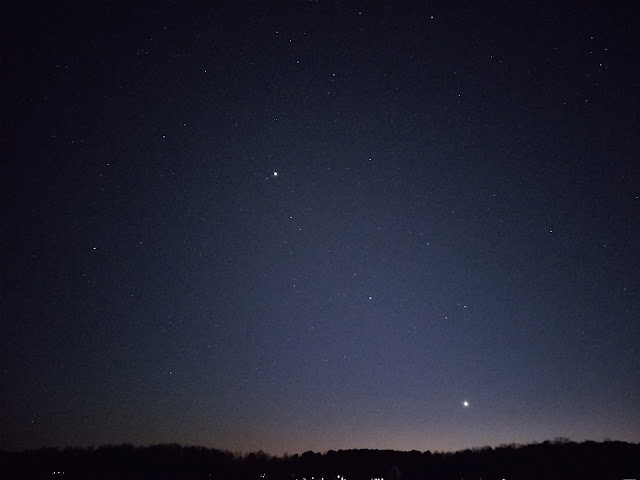But No Comet
Comet Leonard was brightening in the southwestern sky after sunset in late December. Fortunate observers around the world produced beautiful images. Those with telescopes and dark skies used time exposures to capture the comet passing in front of distant galaxies and a globular star cluster. The comet's tail was particularly long and full of wispy structure. Check out these links: https://apod.nasa.gov/apod/ap211203.html. https://apod.nasa.gov/apod/ap211212.html https://apod.nasa.gov/apod/ap211225.html
I wondered if my tripod-mounted phone camera might see the comet and produce images similar to those I made for Comet NEOWISE back in July, 2020 (http://roundgowheels.blogspot.com/2020/07/comet-at-dawn.html ). Unfortunately, Comet Leonard was significantly dimmer than Comet NEOWISE, so I was unsuccessful as you will see below.
Only one night was cloud free, December 22nd. There was a small window of opportunity, about 45 minutes long, between sunset and "comet set". Twilight sky brightness overwhelmed the dim comet close after sunset. The comet dropped below the horizon before the sky became truly dark.
In order to escape multitudes of neighborhood lights, including Christmas lights(!), I walked to a nearby farm field and set up my camera on the bike path there. For a time it was nicely dark. Then, incredibly, a guy with a glaring bright light attached to his head walked his dog along the bike path! No sooner had he disappeared than another guy with a bright headlight came past multiple times on a bike! Eventually, however, I was able to take the following 10-second exposure with my phone.


No comments:
Post a Comment